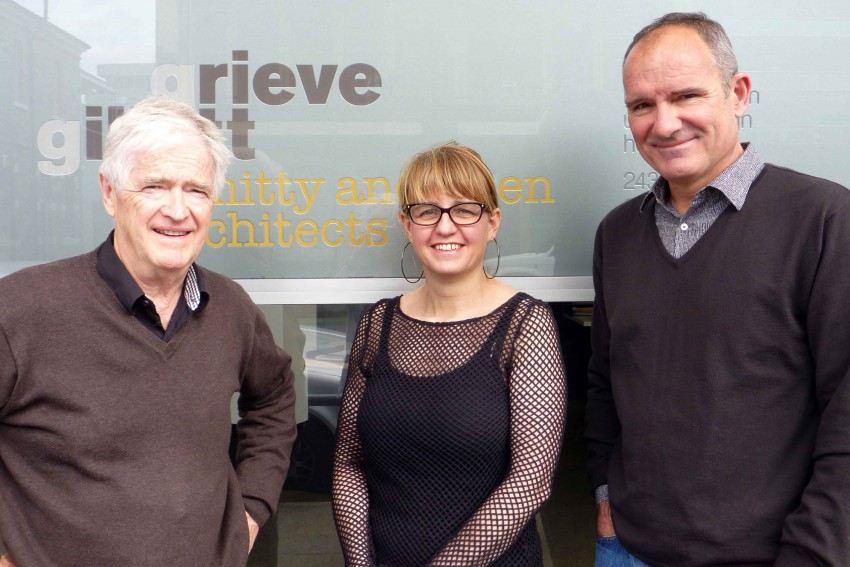Positive Moves

The merger of two of Adelaide’s most well respected architecture practices, Grieve Gillett and Dimitty Andersen Architects, signals a dynamic business partnership.
The merger of two of Adelaide’s most well respected architecture practices, Grieve Gillett and Dimitty Andersen Architects, signals a dynamic business partnership. Mergers are nothing new in the architecture industry and neither are the rumours that inevitably begin to circulate when two practices become one. In early April, Woodhead announced it had gone into liquidation just one day after news broke the design firm had merged with engineering giant GHD. There were whispers and gasps and the situation only served to add weight to the widely held view that practices merge because someone is going under. To be presented with an alternative narrative is not only refreshing, but also reassuring for industry and the wider community that mergers don’t always spell doom and gloom. For local practices Grieve Gillett and Dimitty Andersen Architects their merger in July signals a new chapter that combines more than 40 years of architectural expertise. The three principals are the first to admit each practice comes to the table with its own set of business challenges, but the reason behind the merger has more to do with creative strategy than money. As Steve Grieve explains, “One of the things that leads to successful outcomes in architecture is collaboration, and for that to occur you need a critical mass of people under the one roof.”  Grieve Gillett, Goolwa Beach House. Photo: Peter Barnes The newly formed Grieve Gillett Dimitty Andersen Architects (GGDAA) is almost 30 team members strong, making it one of the largest practices currently working in South Australia. GGDAA targets the local economy and prides itself on being a local expert in terms of understanding the atmosphere, make up and complexity of Adelaide. “We can contribute to all aspects of the built environment,” Paul Gillett says. “And we can do that in a way that is constructive to the wider community.” Merging her team of three with a much larger practice was significant for Andersen, although she is quick to acknowledge the important role small practices play within the industry. They inject a sense of keenness and experimentation that is possible within small-scale environments with fewer overheads, keeping the bigger practices on their toes. But Andersen has to be pragmatic: “Procurement of jobs is becoming much more risk-averse and it’s hard for a small practice to put up its hand for, say, schools or shopping centres, and this has led to bigger practices having a bigger slice of the market. So I’m enjoying being part of a larger team and the exposure to a broader profile of work.” Grieve, Gillett and Andersen have a ‘business as usual’ attitude and hope to be doing a lot more of what they already do moving forward. To date, the reaction from their peers has been overwhelmingly positive and although Andersen feared her bespoke residential work may have been pushed to the side; this hasn’t been the case, with clients even acknowledging the merger’s benefits. GGDAA’s current projects are diverse, including a childcare centre for the University of South Australia, the urban design framework for South Road and restoration of the former Vice Regal Summer residence at Marble Hill. Grieve also speaks for Gillett and Andersen when he says, “We’re not as interested in style and fashion as we are in timeless, sustainable design; we’re driven by sensible design and achieving good design outcomes.” grievegillett.com.au
Grieve Gillett, Goolwa Beach House. Photo: Peter Barnes The newly formed Grieve Gillett Dimitty Andersen Architects (GGDAA) is almost 30 team members strong, making it one of the largest practices currently working in South Australia. GGDAA targets the local economy and prides itself on being a local expert in terms of understanding the atmosphere, make up and complexity of Adelaide. “We can contribute to all aspects of the built environment,” Paul Gillett says. “And we can do that in a way that is constructive to the wider community.” Merging her team of three with a much larger practice was significant for Andersen, although she is quick to acknowledge the important role small practices play within the industry. They inject a sense of keenness and experimentation that is possible within small-scale environments with fewer overheads, keeping the bigger practices on their toes. But Andersen has to be pragmatic: “Procurement of jobs is becoming much more risk-averse and it’s hard for a small practice to put up its hand for, say, schools or shopping centres, and this has led to bigger practices having a bigger slice of the market. So I’m enjoying being part of a larger team and the exposure to a broader profile of work.” Grieve, Gillett and Andersen have a ‘business as usual’ attitude and hope to be doing a lot more of what they already do moving forward. To date, the reaction from their peers has been overwhelmingly positive and although Andersen feared her bespoke residential work may have been pushed to the side; this hasn’t been the case, with clients even acknowledging the merger’s benefits. GGDAA’s current projects are diverse, including a childcare centre for the University of South Australia, the urban design framework for South Road and restoration of the former Vice Regal Summer residence at Marble Hill. Grieve also speaks for Gillett and Andersen when he says, “We’re not as interested in style and fashion as we are in timeless, sustainable design; we’re driven by sensible design and achieving good design outcomes.” grievegillett.com.au  Dimitty Andersen Architects, Toorak Gardens. Photo: Sam Noonan
Dimitty Andersen Architects, Toorak Gardens. Photo: Sam Noonan